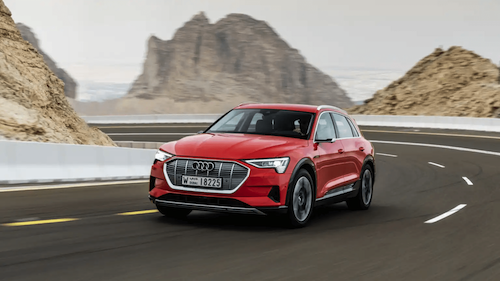Calculate charging time for your electric car: This is how long it takes at home and on the road
With an electric car, you have to plan more time to recharge the battery than if you refuel a combustion engine. But how long does it actually take for the battery to be full again? Our calculator tells you the charging times for your electric car at the socket, a wallbox and at a fast charging station with direct current.
The AutoScout24 charging time calculator
 |
What is the best way to charge my electric car at home?
Basically, you can charge your e-car at a normal socket. The charging power is usually off to fully recharge the battery overnight. But: normal sockets are not designed to be under maximum load for hours. In the worst case, they can be damaged and cause a fire. To reduce this risk, you should limit the charging current to a maximum of 8 amps. However, this also means that charging takes longer.
It is safer and, above all, faster if you install a wallbox in the garage. The home charging stations can withstand the loads and, at between 11 and 22 kW, have a much higher charging power than the 2.3 kW you get from the socket. This way, even large batteries will be recharged without any problems until you set off again in the morning.
However, the installation of a wallbox is associated with costs and you must report it to your grid operator. You also need a permit for a powerful charging station with 22 kW.
Charging your electric car on the road – what you need to know
Charging on the go is usually quick and can often be conveniently combined with a short meal break or shopping in the supermarket. On the other hand, it is more expensive than charging at home – especially if you charge at a fast charging station with direct current. This is because the costs differ not only depending on the provider, but also on the basis of the charging speed.
However, there are also many free charging stations in Switzerland, for example at municipal halls, retailers or power plants. You can find a clear map with the current charging stations including their prices here.
We have summarized everything you need to know about the charging stations in Switzerland in this article.
"Thanks to the regular charging breaks, I arrive at my destination more relaxed on long journeys"
Oliver regularly drives several hundred kilometers on vacation with his Polestar 2. The fact that he has to plan the trip to charge the battery differently than with a combustion engine is no problem for him. In the end, he even thinks the breaks are positive. How satisfied he is with his electric car, he says in the experience report.
Our tools for electric cars
Cost Calculator
How much does your electric car cost you per year? Find out with our calculator in a few minutes.
Traffic tax card
How much traffic tax do you have to pay in your canton and where is the purchase of an e-car tax-advantaged?
Range calculator
How far can you get with a full battery charge of your electric car? Summer or winter, find out here.
The formula for calculating the charging time is simplified: charging time (h) = battery capacity (kWh) / charging power (kW). For example, to fully charge the 50 kWh battery of an electric car, you need
- at the socket at home with 2.3 kW charging power around 21 hours and 45 minutes
- at the wallbox at home with 11 kW charging power around 4 hours and 30 minutes
- at the fast charging station on the motorway with 217 kW around 15 minutes
At the fast charging station, the battery is therefore charged more than 80 times faster than at the household socket.
The charging time depends primarily on the battery capacity and the charging power. The larger the battery and the lower the charging power, the longer it takes to charge. But the outside temperature also has an influence. Batteries of electric cars usually work best at around 20 degrees Celsius, but they charge more slowly in the cold. Last but not least, the charge level of the battery plays a role. If the battery is less than 20% and more than 80% charged, most cars and charging stations reduce the charging power so that the battery is not damaged.
For charging stations that work with direct current, the conversion is not necessary. The current can flow into the battery at full speed. However, electricity in private households is usually only available as alternating current. Charging with direct current is only possible if the right infrastructure is in place. This means that a high-voltage connection, a charging station with an integrated current transformer and a CCS plug are required.
Fast charging stations charge your battery rapidly, as the name promises. But you don't just pay a little more money than if you charge the battery at home. The battery can also suffer from the stress of fast charging. Over time, the maximum charging power can decrease and the battery life is shortened. Whenever possible, you should therefore choose a slower version.
Post a Comment for "Calculate charging time for your electric car: This is how long it takes at home and on the road"